Food and Drink: Special Occasion Foods
National and Public Holidays
Festa della Repubblica (Republic Day)
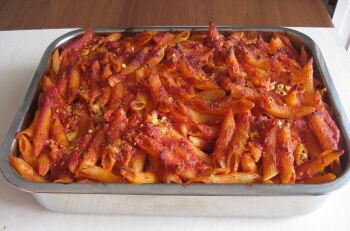
Festa della Repubblica, celebrated on June 2, marks the birth of the Italian Republic in 1946. The day is celebrated with parades, speeches, and family gatherings. Traditional Italian foods are enjoyed, often varying by region. Dishes such as pasta al forno (baked pasta), lasagna, and porchetta (boneless pork roast) are commonly served. Regional specialties such as arancini in Sicily or bistecca alla fiorentina in Tuscany also make an appearance. Desserts such as tiramisu or fruit tarts are enjoyed to cap off the meal, reflecting the diversity of Italian cuisine and the unity of the country.
Religious and Spiritual Occasions
Natale (Christmas)
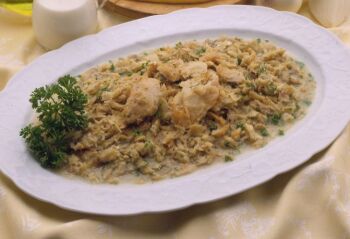
Christmas in Italy is one of the most important religious holidays, marked by a grand feast on Christmas Eve and Christmas Day. The Christmas Eve meal, known as La Vigilia or Feast of the Seven Fishes, is an Italian-American tradition of eating fish and seafood to celebrate the holiday, with dishes such as baccalà (salted cod), clams, and shrimp. Christmas Day’s lunch features meats such as roast lamb, cotechino (pork sausage), and capon (castrated male chicken). Capitone (stuffed eel) is popular in Rome, but in the north, roast pork, sausages, and turkey are more common. Chestnuts are widely eaten, and many candies or chocolates contain nuts, to symbolize fertility. Desserts include panettone and pandoro, two iconic Italian Christmas cakes, served with powdered sugar or cream. Chestnuts also are traditionally eaten on the day after Christmas, St. Stephen’s Day. The food during Christmas reflects family unity and religious reverence, with meals that highlight the abundance of the holiday season.
Pasqua (Easter)
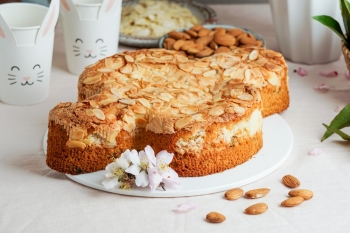
Easter in Italy is a time of renewal and family. Easter Sunday is the culmination of a week of Christian rituals, as well as the first major celebration of spring. The Easter meal typically includes roast lamb, symbolizing the resurrection, served with fresh spring vegetables such as asparagus and artichokes. Torta pasqualina, a savory pie filled with spinach, ricotta, and eggs, also is popular, particularly in Liguria. Frittatas (open-faced omelet), boiled eggs, and egg-heavy breads are common, and chocolate eggs are a favorite treat for children. A special Easter bread called colomba pasquale, shaped like a dove to symbolize peace, is an essential dessert. The food served during Easter emphasizes spring’s bounty, family, and the renewal of faith, with traditional meals reflecting Italy’s rich culinary heritage.
Life Milestones and Personal Celebrations
Weddings
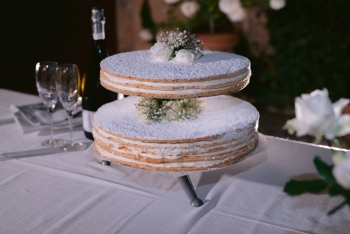
Italian weddings are grand celebrations, often lasting for hours and featuring multiple courses. The wedding feast typically begins with antipasti (appetizers) such as bruschetta (grilled bread with various toppings), insalata caprese (caprese salad), prosciutto (dry-cured ham), focaccia (a leavened flatbread), cheeses, and olives, followed by the primi (first dishes) such as risotto (a creamy rice dish), gnocchi (potato dumplings), or pasta. The secondi (main course) might include roasted meats such as lamb or veal, paired with vegetables. The wedding cake, often a millefoglie (dessert made from layers of puff pastry and cream), is a highlight of the celebration. Food at Italian weddings symbolizes abundance, joy, and the coming together of families, with each course reflecting the richness of Italian culinary traditions.
Birthdays
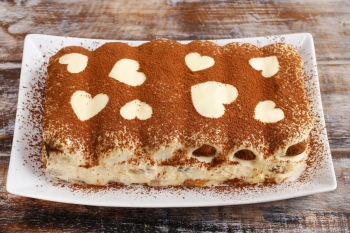
Birthdays in Italy are often celebrated with family meals, where the birthday person’s favorite dishes take center stage. Popular birthday dishes include pasta alla carbonara (pasta with pancetta and eggs) or spaghetti alle vongole (spaghetti with clams). A birthday cake, such as torta alla crema (cream cake) or crostata (fruit tart), is an essential part of the celebration. Prosecco or wine is commonly served, and desserts such as cannoli (a fried pastry filled with sweet ricotta cheese) or tiramisù (a layered dessert of ladyfinger pastries and creamy mascarpone) are enjoyed. The focus is on sharing food with loved ones, with meals designed to bring joy and celebrate another year of life.
Cultural and Regional Festivals
Carnevale (Carnival)
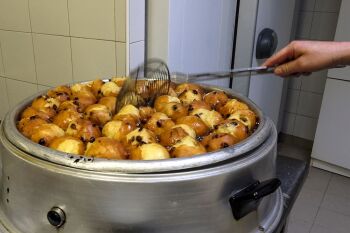
Carnevale, Italy’s version of Mardi Gras, is celebrated in cities such as Venice and Viareggio. It is the indulgent festival that ushers in the period of Lenten abstinence, particularly with regard to meat. Rich polenta and pasta dishes, such as lasagne (lasagna), gnocchi (potato dumplings), and tortelli (a stuffed pasta), are enjoyed with a variety of deep-fried fritters. Frittelle (fried dough balls filled with cream or fruit), chiacchiere (crispy fried pastries dusted with powdered sugar), and castagnole (small doughnuts) are popular treats. In Venice, seafood such as sarde in saor (marinated sardines) is enjoyed. The foods during Carnevale are decadent and rich, symbolizing indulgence before the more austere Lenten season.
Ferragosto
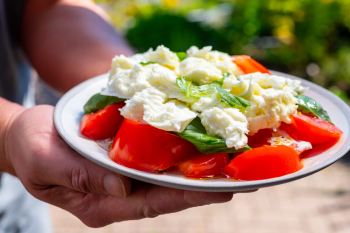
Ferragosto, celebrated on August 15, marks the height of summer and the Assumption of Mary. Italians celebrate with outdoor feasts and barbecues, especially near the coast or in the countryside. Grilled meats such as salsiccia (sausage), chicken, and seafood are common, along with light summer dishes such as caprese insalata (a salad of tomatoes, mozzarella, and basil). Cold desserts such as gelato or granita are enjoyed to combat the heat. The food at Ferragosto reflects Italy’s summer bounty and the communal nature of the celebration, with meals focused on sharing and enjoying the outdoors.
La Festa di San Giuseppe (St. Joseph’s Day)
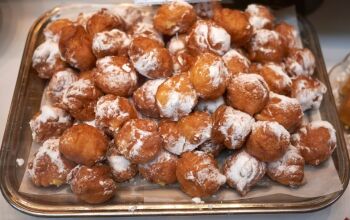
St. Joseph’s Day, celebrated on March 19, is a day to honor Italy’s patron saint, with food playing a central role. Zeppole (deep-fried dough balls sprinkled with powdered sugar) and sfinge (similar to zeppole but larger) are traditional treats enjoyed during this feast day. In Southern Italy, pasta dishes such as pasta con le sarde (pasta with sardines) are commonly served. The foods reflect both religious devotion and the arrival of spring, with meals often shared with family and neighbors.
Sagra della Porchetta (Roasted Pork Meat Festival)
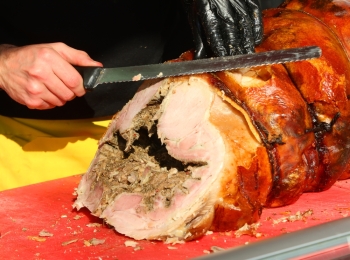
On the first weekend of September, Sagra della Porchetta (Roasted Pork Meat Festival) celebrates porchetta, spit-roasted pork seasoned with herbs and spices. Taking place annually in towns across Italy, particularly in central regions such as Umbria and Lazio, the festival features street food stalls serving porchetta sandwiches and local wines. The focus is on celebrating local food traditions and the craftsmanship of preparing porchetta, with meals enjoyed outdoors in a festive atmosphere. The food reflects the deep connection between Italian communities and their culinary heritage, with porchetta being a symbol of abundance and celebration.
Palio di Siena
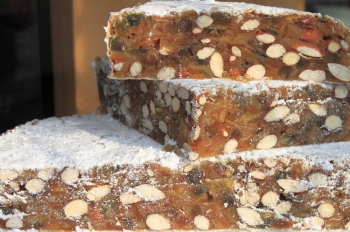
The Palio di Siena, a historic horse race taking place twice a year on July 2 and August 16 in Siena, is a celebration of the city’s medieval heritage. Food plays a central role in the festivities, with large communal feasts taking place in the various contrade (districts) of Siena. Traditional Tuscan dishes such as pappa al pomodoro (tomato and bread soup), pici (thick, hand-rolled pasta), and bistecca alla fiorentina (Florentine steak) are commonly served. Local wines, such as Chianti, accompany the meal, and panforte (a spiced fruitcake) is often enjoyed for dessert. The food at the Palio reflects the region’s culinary traditions and the communal spirit of the event.
Copyright © 1993—2025 World Trade Press. All rights reserved.

 Italy
Italy